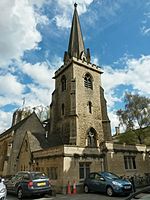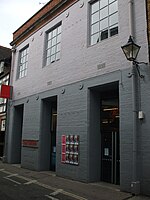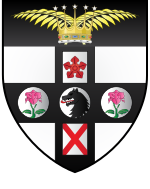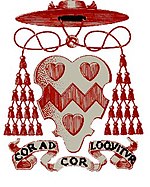Pembroke Square, Oxford

Pembroke Square is a square in central Oxford, England, located to the west of St Aldate's and directly adjoining it. The square is named for Pembroke College, which has its main entrance at the south-west corner of the square, and houses St Aldate's Church which was formerly the library of the college. The square is also opposite the main entrance to Christ Church, the largest Oxford college, with Tom Tower above it to the east.Nos 13–14, were built in 1641, consisting of four floors, using rubble construction with a timber frame above. Nos 17–18 are Jacobean and nos 36–37 are Georgian in style. To the west at the north of the square is Beef Lane, although the road has now been incorporated within the walls of Pembroke College and converted into its "North Quad". Samuel Johnson, a student of Pembroke; and J. R. R. Tolkien, a fellow at Pembroke, variously had rooms overlooking the square.
Excerpt from the Wikipedia article Pembroke Square, Oxford (License: CC BY-SA 3.0, Authors, Images).Pembroke Square, Oxford
Pembroke Square, Oxford City Centre
Geographical coordinates (GPS) Address Website Nearby Places Show on map
Geographical coordinates (GPS)
| Latitude | Longitude |
|---|---|
| N 51.750277777778 ° | E -1.2575 ° |
Address
St Aldate's Church
Pembroke Square
OX1 1DP Oxford, City Centre
England, United Kingdom
Open on Google Maps











